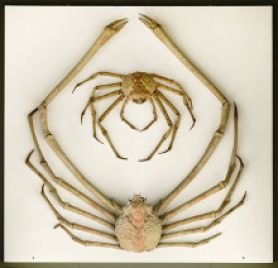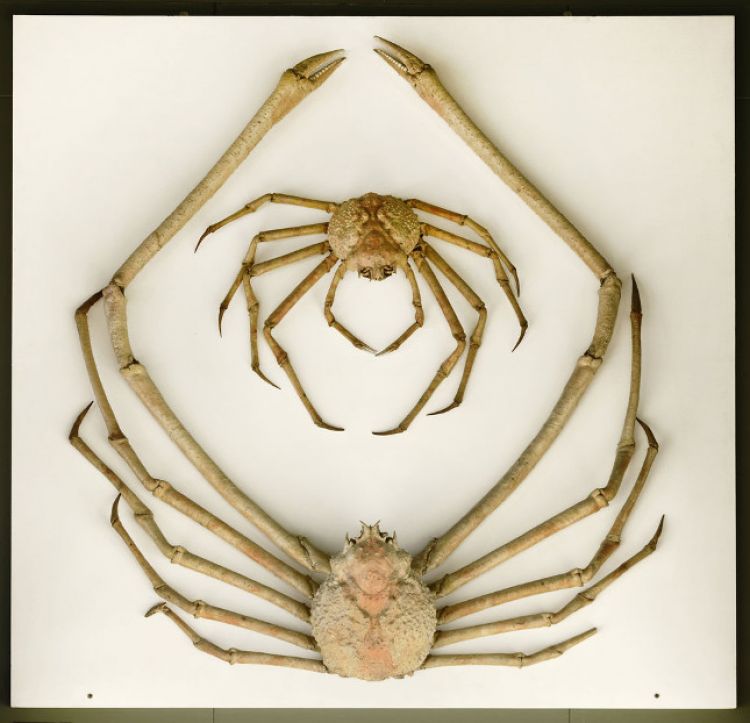Japanese spider crab (Macrocheira kaempferi)

The Japanese spider crab is today's largest living crustacean. Living at depths of between 50 and 300 metres, it feeds on other crustaceans and molluscs. It can weigh up to 20 kg and live for a hundred years.
These two sea spiders (male and female) were collected by Ludwig H.P. Döderlein, the first European zoologist to spend time in Japan, between 1879 and 1881. This future director of the Zoological Museum collected many marine animals there, in particular in the bay of Sagami, near Tokyo, completing his collection with amphibians, mammals, birds and snakes. Currently, some of these species are threatened, or have disappeared from Sagami Bay, a situation which has led a dozen Japanese zoologists to come to Strasbourg to study them. In 2009, specimens kept in Strasbourg were loaned to the Tokyo Science Museum for an exhibition retracing the history of the Sagami Bay fauna.
